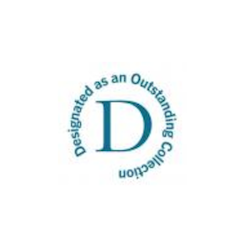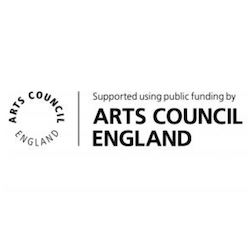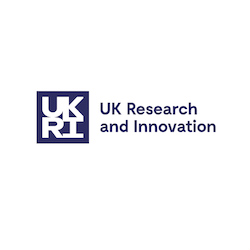Over the last twenty years, museums have been diagnosed as instruments of modern western rationality. Ethnographic museums, particularly, have been seen as vehicles of knowledge, classification, and racial theory, theory that needless to say did violence to the Indigenous cultures that were subjected to measurement, labelling, and systems of alien, evolutionary thought. Many anthropological museums certainly did exhibit racial science, or stereotypes of savagery. But there has always been another side to these institutions. Behind a rhetoric of rationality, they were shaped by accident and eccentricity. Travellers and researchers took the things that they were given. Collections were products of Indigenous action, of local interests in exchange, not of any system in the science. And, however ordered they appeared, museums have also always been places of mystery, magic, secrecy and danger.
Brook Andrew’s recent works respond to the haunting power of images that have long been hidden. His series, The Island and Gun-Metal Grey, do not look like the provocative photographic, neon, installation and performance works that he has exhibited widely over the last fifteen years. Yet this diverse and impressive body of work is unified conceptually by interests in language, politics, and longstanding contentions around Australian history. And from the beginning of his career, Andrew has responded to historical and ethnographic images of Aboriginal people in archives and museums. His prizewinning early work, Sexy and Dangerous 1 (1996) recontextualized such a photograph in a deceptively simple, yet powerful and thought-provoking way. A visual record of a particular ‘native type’ is transformed into an image of desire and cosmopolitanism. Beauty, confidence, adornment and ritual are all at play here, as is the process itself, of bringing such a portrait out from the obscurity of the archive and into public view. ‘I was a young artist trying to look at our history’, Andrew has remarked more recently. ‘It was about getting it out there and looking at us as Australians. It was also about our engagement in the Asia-Pacific area.’
Since 1995, Andrew has been visiting and studying collections such as those of the Royal Anthropological Institute in London, MAA in Cambridge, and the Mitchell Library in Sydney, and has recently returned to the business of recontextualizing historic images. Again, he has enlivened old and obscure depictions of Indigenous people, but he has done this more obliquely than before. Whereas, in Sexy and Dangerous, the inscription of the title gave the work its accent and audacity, the treatment of the source images in the Gun-Metal Grey series is more elusive and enigmatic. In part, their sheer enlargement is evocative. If they do nothing else, these works surely remind us that to make a picture bigger, to blow it up, oddly combines simplicity and complexity. Scale says that an image is not just an image, but something seen and felt by a person, who is affected in a different way by a snapshot the size of a postcard, and a work that is not flat but palpable, perhaps close to your or my own height, confronting us on a wall. If architects’ models, toy trucks, and dolls’ houses make buildings, vehicles, and domesticities available for play and manipulation, blow-ups like these works of art make images unmanageable. They unleash potentialities – to move us emotionally, to represent historic suffering or survival, to speak politically – that the historic cartes-de-visite and the playing-card size sketches of Aboriginal life perforce lacked.
The Island I and II are among Andrew’s most ambitious and spectacular works to date. They are based on images from a remarkable album, one of the treasures of the Haddon Library in Cambridge. William Blandowski was a natural historian in the tradition of Alexander von Humboldt. He arrived in Australia in 1849 and began to make a name for himself in intellectual and scientific circles in Melbourne, but was frustrated and sidelined by politicking around the establishment of the colony’s first museum. In 1856-57 he led an expedition to the confluence of the Murray and Darling rivers, a region then little known to white settlers, and accumulated a massive collection of new natural specimens, on the basis, he was happy to acknowledge, of close collaboration with the Nyeri Nyeri people, whose activities and ceremonies were studied and depicted by the expedition artist, Gerard Krefft. On his return to Melbourne, Blandowski was initially feted, but swiftly again caught up in controversy and compelled to return to Europe. Over 1860-61, he employed a draughtsman to rework Krefft’s drawings, together with illustrations from other sources, and planned an ambitious visual encyclopaedia in the Humboldtian tradition. But he failed to gain financial backing and only two copies of the album, Australien in 142 Photographischen, are today known to exist, one in the Staatsbibliothek, Berlin, and the other in the Haddon. Early in the twentieth century, for some reason, a set of copy photographs were made and printed, many several times over. Some three hundred of these faded and flimsy prints are in the Museum’s photographic archive, and it was these that Brook Andrew came across, and was immediately excited by, when he visited MAA first in June 2007.
Through the use of colour, and the production of a quasi-painterly surface, Andrew has accentuated the texture, materiality, and poignancy of an old – indeed an ancestral – printed image. While academic commentators on anthropological photography have often stressed the stereotypes of studio imagery, Andrew has been open to what he has described as ‘extraordinary stories of cultural identity, persecution, racial discrimination, history, and the human condition’, that anthropological images suggest.
Blandowski’s title was misleading. No doubt he hoped to capitalize on photography’s status at the time, as an advanced technology with a unique capacity to represent nature. But the album was made up of photographs of drawings, some of which derived from illustrations in other exploratory works. Many of the images may well be accurate visual records, but others are twice or three times removed from field sketches that were perhaps themselves imaginative, even falsified or fantastic. Hence the corpus possesses an enigmatic status, that Andrew’s work literally magnifies, and renders magnificent.
Professor Nicholas Thomas
Come in to the light
My recent work aims to make visible Australian ethnographic photography as social/political imagery in contemporary art. Ethnographic images of Aboriginal people from Australia are scarcely used in Australian art, and rarely discussed or debated.
Images of disappeared Aboriginal people – who may have suffered the same fate as other disappeared people anywhere in the world – reveal extraordinary stories of cultural identity, persecution, racial discrimination, history, and the human condition. Colonial politics, activism and personal experience in Australia have commonalities with experiences internationally, extending to both north and south America, Europe, and Asia. They should be brought into the light, aroused in the public domain.
Haunting images of the past have inspired artists to keep similar memories and histories alive. Works such as Christian Boltanski’s portraits from World War II, Marcelo Brodsky’s photographic essays on the disappeared of Argentina, and portraits by the Columbian artist Oscar Munoz are widely discussed and widely seen.
Yet in my experience, Australian and international collections have complex protocols and taboos in the access and use of ethnographic photography. In the end, images of death, sexuality and evidences of colonial wars are thought not to exist and therefore erased or hidden from the public eye, without witness or assessment. Hence these people are never found. Though we know American culture and history through Warhol’s depictions of death, racial vilification and murder.
I hope these works – from the Gun-Metal Grey, H142, and The Island series – allow further engagement in rigorous discussion, to share, learn and test ideas about the use of ethnographic images and to re-visit our own histories in this country and how similar they are to well documented and confronting histories internationally.
The images I have researched and used between 1996-2007 come from my own collection of bought images, the collections of the Royal Anthropological Institute, London, the Museum of Archaeology and Anthropology, Cambridge, the Australian Institute of Aboriginal and Torres Strait Islander Studies, Canberra, and the Mitchell Library, Sydney.
I would like to thank those who have supported me through my investigation and selection of images. It has taken many years to gather the courage to create this work. Thank you to Professor Marcia Langton, Roslyn Poignant, Arek Bentkowski, Professor Nicholas Thomas, and many more, my family and friends.
Brook Andrew
BIOGRAPHY
BROOK ANDREW was born in Sydney in 1970. He lives and works in Melbourne. He is represented by Tolarno Galleries, Melbourne, and has had many solo and group exhibitions in Australia and internationally. In 2007, the Monash University Museum of Art hosted a major survey, Eye to Eye, and in 2008 the Aboriginal Art Museum, Utrecht, will host an exhibition of his recent work. For a complete bibliography and news of Brook’s projects and exhibitions, see www.brookandrew.com or www.tolarnogalleries.com
ACKNOWLEDGEMENTS
This catalogue and exhibition have been supported by the Australian High Commission, London. MAA also thanks Jan Minchin and Olivia Radonich of Tolarno Galleries, Melbourne, for much practical help; and of course Brook Andrew for his enthusiasm about this project.
This project has been assisted by the Australian Government through the Australia Council for the Arts, its arts funding and advisory body.
LIST OF WORKS
Brook Andrew
The Island I 2008
Mixed media on Belgian linen, 250 x 300 x 5 cm
Courtesy of the artist and Tolarno Galleries, Melbourne
Brook Andrew
The Island II 2008
Mixed media on Belgian linen, 250 x 300 x 5 cm
Courtesy of the artist and Tolarno Galleries, Melbourne
Brook Andrew
Gun-metal grey 2007, Galiyn (rain)
Mixed media, 170 x 110 x 5 cm
Courtesy of the artist and Tolarno Galleries, Melbourne
Brook Andrew
Gun-metal grey 2007, Muuruun (life)
Mixed media, 170 x 110 x 5 cm
Courtesy of the artist and Tolarno Galleries, Melbourne
Brook Andrew
H142: First female aboriginal seen and captured.
Camp XL, 2007. Yarruudang II (dream).
Mixed media, 170 x 110 x 5 cm
Courtesy of the artist and Tolarno Galleries, Melbourne
Historic display cabinet with William Blandowski’s 1862 album, Australien in 142 Photographischen, and a collection of copy-prints.






